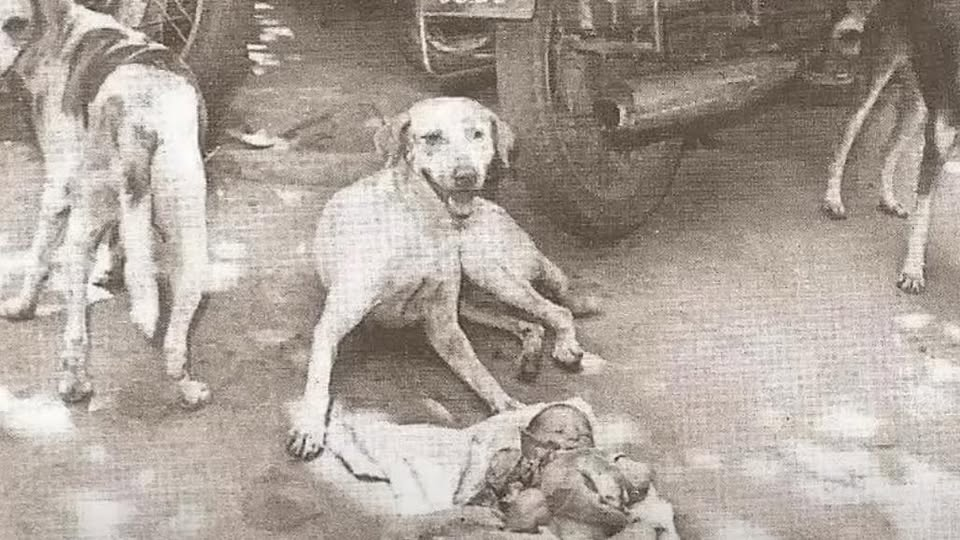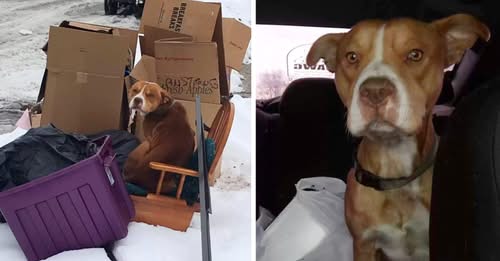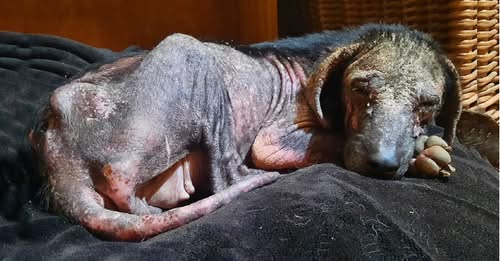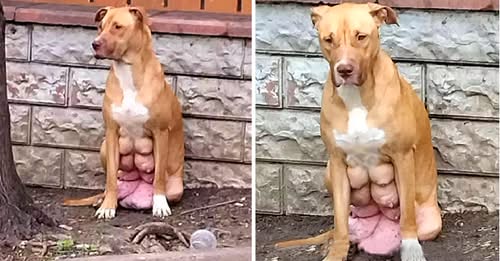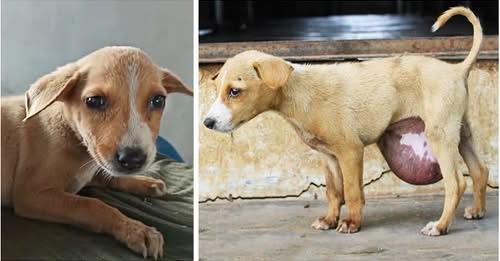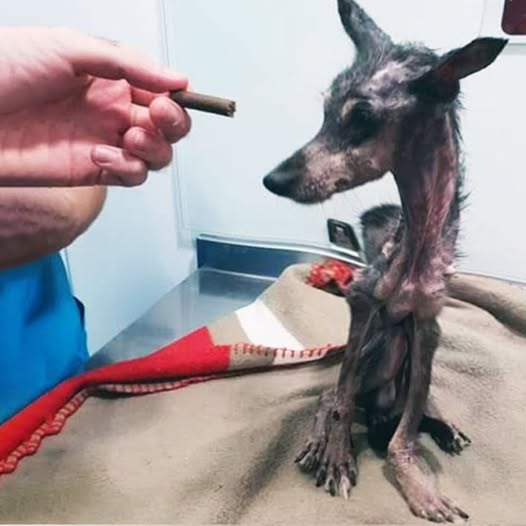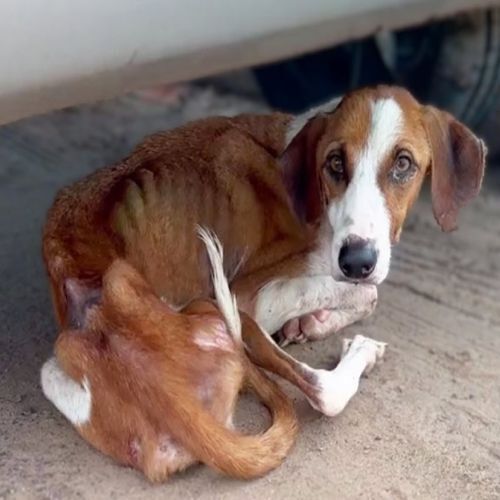In the summer of 1996 in Kolkata, India, someone abandoned a newborn girl in a roadside trash bin and walked away. Three stray dogs, skinny, nameless, and unwanted, heard her faint cries cutting through the street noise. They leapt into the bin and gently pulled her out onto a scrap of cloth. For the next forty-eight hours they never left her side. They licked her face to keep her awake, pressed their bodies against hers for warmth, and snarled at anyone who came too close. The neighbors, drawn by the relentless barking, came to see. Rescuers soon arrived and found the bravest pack in the city standing guard over the smallest life they had ever saved. That night in Kolkata in 1996, before the world even knew she needed saving, three stray dogs had already decided she would live. Not out of obligation, not out of blood, but by survival and loyalty.
The rescuers carefully approached the scene, noting the fierce protection the dogs offered. The city’s streets were crowded with people, rickshaws, and the constant honking of impatient traffic, but these three dogs paid no mind. Their attention remained entirely on the fragile human infant trembling beneath them. Slowly, the rescuers managed to wrap the girl in a blanket and lift her gently, but as soon as she was separated, two of the dogs barked and lunged, snapping at the hands that tried to take her. Only one of them allowed herself to be calmed, her head tilted in confusion as if she couldn’t understand why her charge was being taken away.
The girl, shivering and weak from dehydration, was immediately rushed to a nearby hospital. Doctors marveled at her survival; most newborns abandoned in such harsh conditions would not last the night. The infant had minor bruises and scratches but was otherwise healthy—a miracle in the eyes of the medical staff. Yet the story of her survival was incomplete without the heroes that had risked their own lives to guard her. News of the incident spread quickly through the neighborhood, and soon reporters arrived, eager to capture the astonishing bond between humans and stray dogs. Photographs of the three lean dogs circling the crib, growling protectively, circulated in local newspapers, turning these once-forgotten animals into icons of courage.
The city council debated what to do with the dogs. Shelters were overcrowded, and euthanasia was a common practice for strays in Kolkata at the time. But the public outcry was immediate and fierce. Letters poured in from citizens demanding that these animals be honored rather than destroyed. Volunteers arrived to provide food, blankets, and medical checkups, determined to ensure the dogs were safe. In the following days, the girls’ rescuers named the dogs Raju, Tara, and Chotu—names that would become synonymous with heroism in the hearts of those who had witnessed their bravery.
As the weeks passed, the infant, now receiving round-the-clock care, thrived. Her tiny fingers wrapped instinctively around the rescuers’ hands, her cries softened to gentle coos. Yet no matter how many people came to visit, the doctors noticed a peculiar pattern: the infant’s eyes would brighten at the sound of barking. Though she could not yet speak, she seemed to recognize the bond that had saved her life. And while the dogs were not allowed in the hospital initially, volunteers made sure to visit them daily, keeping the connection alive.
Outside the hospital walls, the trio of dogs became a fixture in the neighborhood. Children would run up to them, imitating the way they had guarded the infant, and adults would bring food, whispering thanks to the creatures who had saved a life without asking for anything in return. Raju, the largest and most fearless of the three, often led the way, sniffing the air for danger. Tara, smaller but no less determined, stayed closest to the infants’ side when visits were permitted, her eyes soft with a protective warmth. Chotu, quiet and observant, kept watch from a distance, always ready to intervene if something threatened their charge.
Months later, after the infant was stable enough to leave the hospital, a local family who had followed her story decided to adopt her. They named her Aanya, a name that meant “grace” in Sanskrit, reflecting the miraculous circumstances of her survival. Even as she grew, she remained unaware of the full extent of the devotion that had saved her life. Yet those who had been there that fateful night remembered every detail: the low growls, the tender nudges, the shivering bodies pressed against a tiny form in the humid Kolkata night.
Raju, Tara, and Chotu never forgot either. Though the infant was now safely in a home, the trio continued to roam the streets of their neighborhood. Locals watched as they patrolled alleyways and open spaces with the same fierce loyalty, always keeping a distance but never letting anyone or anything come between them and the memory of the child they had saved. Occasionally, volunteers would bring Aanya back to the neighborhood to see the dogs. She could not speak the words of gratitude they deserved, but her laughter and wide eyes spoke volumes. The dogs, in turn, would wag tails, sniff, and nuzzle her cautiously, as if checking that the little girl was truly safe.
Years passed, and the story of the three stray dogs became legend. Kolkata locals told it to children, emphasizing the values of loyalty, courage, and compassion. Writers included it in newspapers, documentaries chronicled it on television, and social media decades later ensured that Aanya’s tale reached audiences across the world. Anthropologists and animal behaviorists studied the trio, fascinated by the seemingly instinctual understanding of the infant’s fragility and the protective behavior that defied expectation. How could three animals, with no family and no obligation, instinctively know that a tiny human life needed defending? It was a question that science attempted to answer, but for many, the answer was simple: love, in its purest, most instinctive form, knows no species.
Aanya grew into a vibrant, intelligent girl, aware that her life had begun under extraordinary circumstances. Though she never remembered the night of her rescue, she developed a lifelong reverence for animals, especially dogs. Her parents encouraged her fascination with them, fostering a bond that mirrored the connection she had experienced from her very first hours. Raju, Tara, and Chotu, by then older and slower but still proud and watchful, were never far from the girl who had unknowingly changed the course of their lives. Every year on the anniversary of her rescue, the family would bring food and blankets to the neighborhood, honoring the dogs who had been her first guardians.
The story of Aanya and her canine saviors also inspired community efforts in Kolkata. Neighbors who had once turned away from stray dogs now began feeding them, building shelters, and advocating for humane treatment. Schools incorporated lessons on empathy and animal care, reminding children that courage and loyalty come in many forms. Raju, Tara, and Chotu became more than local heroes—they became symbols of hope, a reminder that even in the harshest environments, small acts of bravery and kindness could change the course of a life.
Even in her adulthood, Aanya carried the imprint of that first night. She became a veterinarian, dedicating her life to caring for abandoned and mistreated animals. Each time she held a trembling puppy or a shivering kitten, she remembered the warmth and safety of those three dogs who had taught her the meaning of love without expectation. Their names were never forgotten, etched into her memory as the true family that had once risked everything for her survival. And though Raju, Tara, and Chotu eventually passed on, their legacy endured—in the streets they had patrolled, in the hearts of those who had witnessed their courage, and in the life of the girl they had chosen to protect against all odds.
The story of a newborn abandoned in a trash bin and three stray dogs who refused to leave her side is not merely a tale of survival. It is a testament to the boundless loyalty found in the natural world, a reminder that heroism is often quiet, humble, and unexpected. For those forty-eight hours in Kolkata, India, the world watched as three thin, hungry, and overlooked creatures became the guardians of a life yet to bloom. And in doing so, they taught a timeless lesson: the capacity to love and protect transcends species, circumstance, and even the limits of imagination.
Aanya, now surrounded by the family, friends, and animals she loves, often thinks about the night she owes her life to. She has never forgotten the dogs who taught her the first lesson of her life: that being chosen to live is sometimes not about fate alone, but about the courage and devotion of those who refuse to abandon you. And even as decades pass, the story of those three stray dogs remains a shining example of the profound connections that can exist between humans and animals—a bond so strong that it can defy neglect, indifference, and the cruelty of the world, ensuring that life, no matter how fragile, always finds a way to endure.
